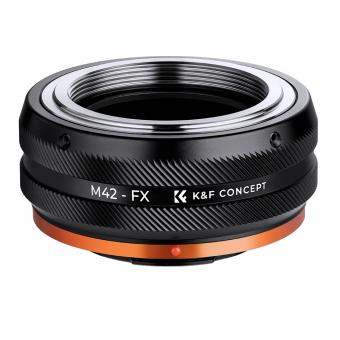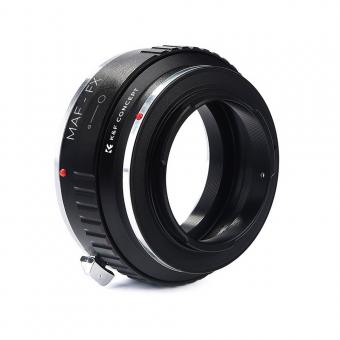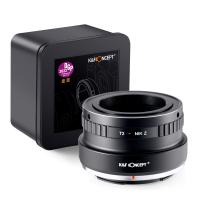What Can Microscopes Be Used For ?
Microscopes can be used for a variety of purposes, including scientific research, medical diagnostics, and educational purposes. They allow scientists and researchers to observe and study objects that are too small to be seen with the naked eye. In scientific research, microscopes are used to examine cells, tissues, and microorganisms, helping to advance our understanding of biology and medicine. In medical diagnostics, microscopes are used to analyze blood samples, identify pathogens, and detect abnormalities in cells. They are also widely used in educational settings to teach students about the microscopic world and to demonstrate scientific concepts. Overall, microscopes play a crucial role in various fields by enabling detailed observation and analysis of tiny structures and organisms.
1、 Biological research and observation of cells and microorganisms.
Microscopes are essential tools in the field of biological research and observation. They allow scientists to study and analyze cells, microorganisms, and other microscopic structures in great detail. By magnifying these tiny structures, microscopes enable researchers to uncover the intricate workings of living organisms and gain a deeper understanding of their biology.
One of the primary uses of microscopes in biological research is the examination of cells. Microscopes allow scientists to visualize the different components of cells, such as the nucleus, mitochondria, and cytoplasm. This enables them to study cell structure and function, as well as investigate cellular processes like mitosis and cell division.
Microscopes are also used to observe microorganisms, such as bacteria, fungi, and protozoa. By magnifying these organisms, scientists can study their morphology, behavior, and interactions with their environment. This knowledge is crucial for understanding the role of microorganisms in various biological processes, including disease development and ecological systems.
In recent years, advancements in microscopy techniques have expanded the capabilities of microscopes. For example, confocal microscopy allows researchers to obtain high-resolution, three-dimensional images of cells and tissues. This technique has revolutionized the field of cell biology by providing detailed insights into cellular structures and processes.
Furthermore, electron microscopy has become an invaluable tool for studying the ultrastructure of cells and microorganisms. By using a beam of electrons instead of light, electron microscopes can achieve much higher magnification and resolution. This has enabled scientists to visualize subcellular structures, such as organelles and macromolecules, with unprecedented detail.
In addition to biological research, microscopes have found applications in various other fields, including medicine, forensics, and materials science. They are used for diagnosing diseases, analyzing forensic evidence, and examining the structure of materials at the nanoscale.
In conclusion, microscopes are indispensable tools for biological research and observation. They allow scientists to delve into the microscopic world and uncover the intricacies of cells, microorganisms, and other tiny structures. With advancements in microscopy techniques, our understanding of biology continues to expand, leading to new discoveries and advancements in various scientific disciplines.
2、 Medical diagnosis and examination of tissue samples.
Microscopes are versatile tools that have a wide range of applications in various fields. One of the most significant uses of microscopes is in medical diagnosis and examination of tissue samples. Microscopes enable healthcare professionals to observe and analyze cells and tissues at a microscopic level, aiding in the identification and diagnosis of diseases.
In medical diagnosis, microscopes are used to examine blood samples, allowing for the detection of abnormalities such as infections, anemia, and blood disorders. They are also used to analyze urine samples, helping to diagnose urinary tract infections, kidney diseases, and other urinary system disorders. Microscopes play a crucial role in the examination of tissue samples obtained through biopsies, enabling pathologists to identify cancerous cells and determine the stage and type of cancer.
Moreover, microscopes are used in research laboratories to study the structure and function of cells and tissues. They allow scientists to investigate the mechanisms of diseases, develop new treatments, and understand the effects of drugs on cells. Microscopes are also used in the field of genetics to study chromosomes and DNA, aiding in the diagnosis of genetic disorders and the identification of gene mutations.
In recent years, advancements in microscopy techniques have further expanded the capabilities of microscopes in medical diagnosis. For example, confocal microscopy allows for the visualization of three-dimensional structures within cells and tissues, providing more detailed information. Additionally, fluorescence microscopy enables the labeling and tracking of specific molecules within cells, facilitating the study of cellular processes and the development of targeted therapies.
In conclusion, microscopes are invaluable tools in medical diagnosis and examination of tissue samples. They enable healthcare professionals to observe and analyze cells and tissues at a microscopic level, aiding in the identification and diagnosis of diseases. With ongoing advancements in microscopy techniques, the capabilities of microscopes continue to expand, allowing for more detailed and precise analysis in the field of medicine.
3、 Material science and analysis of microstructures and defects.
Microscopes are powerful tools that have revolutionized the field of material science and analysis of microstructures and defects. They allow scientists to observe and study materials at a microscopic level, providing valuable insights into their composition, structure, and behavior.
One of the primary uses of microscopes in material science is to examine the microstructure of materials. By magnifying the sample, scientists can observe the arrangement of atoms, grains, and phases within a material. This information is crucial for understanding the material's mechanical, thermal, and electrical properties. Microscopes also enable the analysis of defects such as dislocations, grain boundaries, and cracks, which can significantly affect a material's performance.
Microscopes are also used for the characterization of nanomaterials, which are materials with dimensions on the nanometer scale. With the advent of nanotechnology, the ability to visualize and analyze nanomaterials has become increasingly important. Microscopes equipped with advanced techniques such as scanning electron microscopy (SEM) and transmission electron microscopy (TEM) allow scientists to study the size, shape, and distribution of nanoparticles, nanotubes, and other nanostructures.
In recent years, there has been a growing interest in the use of microscopes for in-situ experiments. This involves observing materials under real-time conditions, such as subjecting them to mechanical, thermal, or electrical stimuli while simultaneously imaging their behavior. In-situ microscopy provides valuable information about the dynamic processes occurring within materials, helping scientists understand their response to external stimuli and design materials with enhanced properties.
Furthermore, microscopes are increasingly being used in interdisciplinary research, where materials science intersects with fields such as biology, chemistry, and physics. For example, microscopes are used to study biological samples, such as cells and tissues, at high resolution, enabling researchers to investigate the structure and function of living organisms. In the field of chemistry, microscopes are used to analyze the composition and morphology of catalysts, polymers, and other chemical substances.
In conclusion, microscopes have a wide range of applications in material science and analysis of microstructures and defects. They enable scientists to study the microstructure of materials, analyze defects, characterize nanomaterials, perform in-situ experiments, and facilitate interdisciplinary research. As technology advances, microscopes continue to evolve, providing researchers with increasingly powerful tools to explore and understand the world at the microscopic level.
4、 Forensic investigation and identification of trace evidence.
Microscopes are versatile tools that have a wide range of applications in various fields of science and research. One significant area where microscopes are extensively used is in forensic investigation and the identification of trace evidence.
Forensic investigation involves the collection, analysis, and interpretation of evidence to solve crimes and establish facts in legal proceedings. Microscopes play a crucial role in this process by allowing forensic scientists to examine minute details that are not visible to the naked eye. They enable the identification and analysis of trace evidence such as fibers, hair, glass fragments, paint chips, soil particles, and even biological materials like blood and semen.
Microscopic examination of trace evidence can provide valuable information to investigators. For example, the comparison of fibers found at a crime scene with those from a suspect's clothing can help establish a link between the two. Similarly, the analysis of hair samples can provide insights into the identity of individuals present at the scene. Microscopes also aid in the identification of tool marks, gunshot residue, and other physical evidence that can be crucial in reconstructing the sequence of events.
In recent years, advancements in microscopy techniques have further enhanced the capabilities of forensic investigation. For instance, scanning electron microscopy (SEM) allows for high-resolution imaging and elemental analysis of trace evidence, providing additional information about its origin and composition. Additionally, techniques like fluorescence microscopy and Raman spectroscopy enable the detection and characterization of specific substances, such as drugs or explosives, which may be present as trace evidence.
Overall, microscopes are indispensable tools in forensic investigation, enabling the identification and analysis of trace evidence that can provide crucial insights into criminal cases. As technology continues to advance, it is likely that microscopes will play an even more significant role in forensic science, aiding in the accurate and efficient resolution of crimes.





































